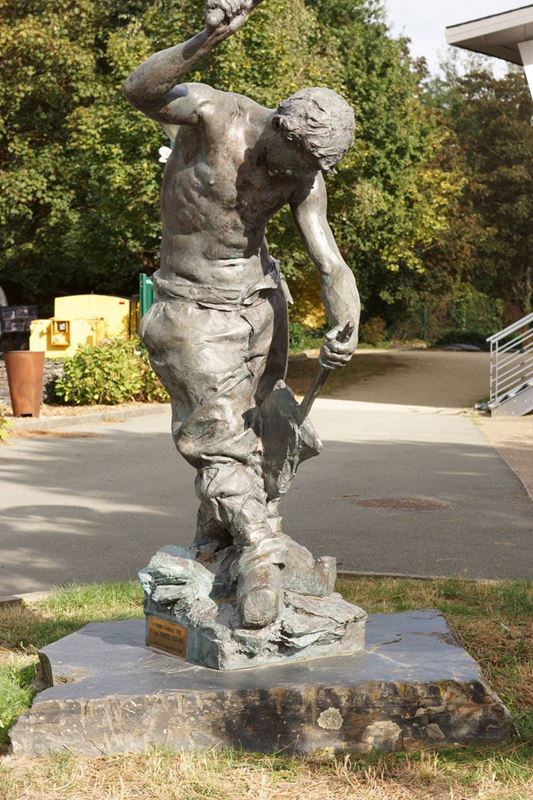About the slate quarries of Angers, France, and what remains after centuries of schist extraction and slate production.
Quarry Pits and Walls: After centuries of slate extraction, you might find several abandoned quarry pits or excavated areas where schist was once extracted. These pits could be surrounded by walls made of stone or earth that were built to access the valuable schist deposits.
Tunnels and Underground Spaces: In some slate quarries, especially those that were active for a long time, you might find intricate tunnel systems and underground spaces. These tunnels were likely used to extract schist and transport it within the quarry.
Spoil Heaps: Over the course of 600 years of slate extraction, there might be piles of waste material, also known as spoil heaps or tailings, left behind. These piles consist of material that was deemed unsuitable for slate production and were discarded during the extraction process.
Ruins and Structures: Depending on the historical context, you might come across the ruins of buildings or structures that were once used for slate production activities. This could include workshops, storage areas, and possibly even residential structures for workers.
Abandoned Equipment: In some cases, remnants of machinery and equipment used for slate extraction and processing might still be present. These could include old tools, carts, rails, and other implements.
Natural Regrowth: Over time, abandoned quarries often undergo a process of natural regrowth. Vegetation might have covered parts of the quarry pits and surrounding areas, creating a more scenic and nature-rich landscape.
Historical Significance: Slate quarries can hold significant historical and cultural value. They might have been an integral part of the local economy and community for centuries, leaving behind a legacy that’s reflected in local stories, traditions, and even architectural uses of slate.















